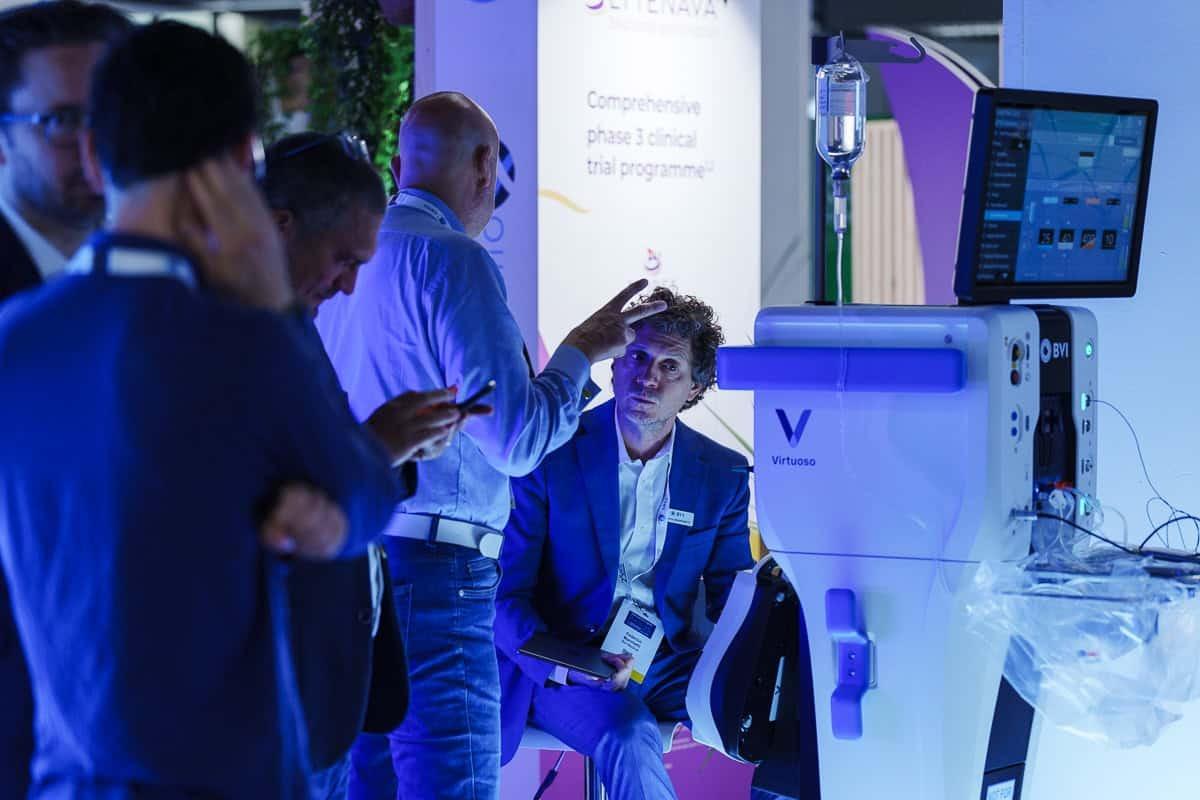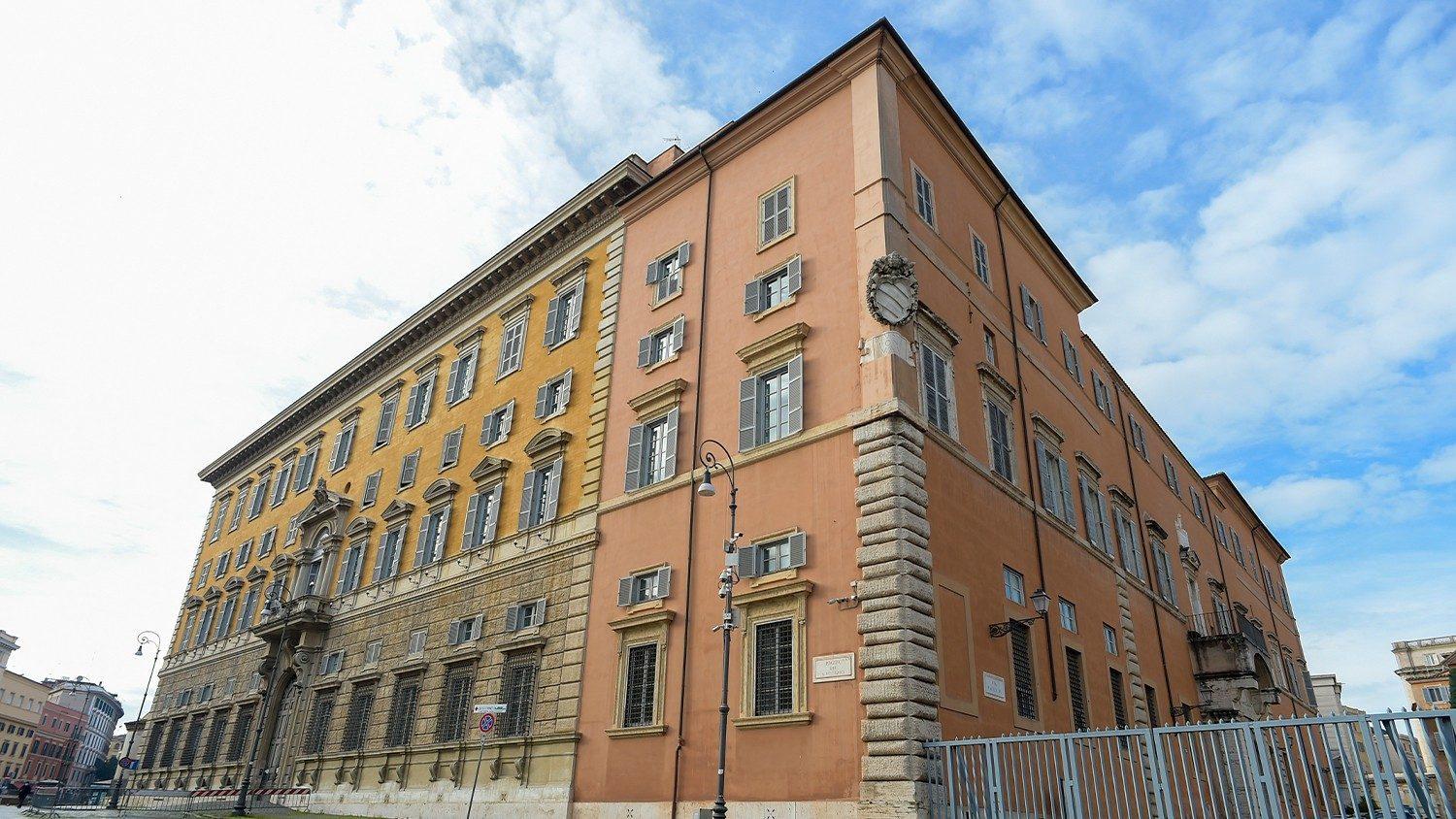The European Society of Retina Specialists (Euretina) 2025 Annual Congress, held from September 4-7 in Paris, has become a unique platform for optimism, presenting a wave of remarkable innovations that promise to revolutionize the treatment of retinal diseases.With more than 10,000 international participants and a 25% increase in abstract presentations compared to previous editions, this 25th edition marked a historic milestone and demonstrated that the future of ophthalmology is no longer limited to slowing the progression of blindness, but rather resolutely towards restoring sight as a defining goal.
Progress in geographic atrophy
Eatophorchi (Go), work, act of macular degeneration Macole Congress Macole Macu.
This innovative nanoparticle designed to modulate the immune system showed that a single intravitreal injection was able to significantly reduce the area of hyperautofluorescence around atrophy, a key indicator of cellular distress that predicts areas that will progress to atrophy in the near future.Phase 2a results showed not only an excellent safety and tolerability profile, but also a significant reduction in lesion progression compared to the natural course of the disease.
A Phase 2 study comparing AVD-104 with Avakinatate Pegol (IzerShy), one of the approved treatments for geographic atrophy, is ongoing, with results expected by the end of 2025.
A similarly revolutionary development came from Sciences Corp. with its PRIMA retinal implant system, which was the first to restore "visual shape" in patients with geographic atrophy.Preliminary results of the PRIMAvera study presented at the conference showed a mean improvement of 23 ETDRS letters (4.6 lines) at 12 months after implantation, with a maximum improvement of 59 letters (11.8 lines) per patient.The device uses a wireless photocell, surgically implanted under the retina and used in conjunction with special glasses with a built-in camera, allowing patients to perform highly precise visual tasks such as reading text and recognizing faces.
Gene and cell therapy: a new frontier in vision restoration
Gene and cell therapies have attracted attention with innovations that open a new chapter in the fight against inherited diseases of the retina and cement the concept of eye regenerative medicine:
Broad-spectrum optogenetic therapy (MCO-010 from Nanoscope Therapeutics): Long-term follow-up data from the REMAIN study showed positive efficacy and safety results for MCO-010 (sonpiretigene isteparvovec) at 152 weeks. Delivered as a single intravitreal injection, this gene-agnostic optogenetic therapy has been shown to be the first and only therapy in randomized controlled trials to restore vision in patients with retinitis pigmentosa and severevision loss. The revolutionary property of MCO-010 is that it works independently of specific genetic mutations, converting residual retinal neurons into artificial photoreceptors by expressing polychromatic opsins.
Advanced gene editing (MIRANZA CROMPROME, SENANITEROSE, SENANARE GEMORTERSERSER creates Stargard Genions using cellular genetic mutations, genetic mutations from the source. Dr. Esther Pomeris, Head of Basic Research at Miranza, to change the personal direction caused by this disease,
Hajen revolutionary gene therapy.Alvin Luke, co-founder and CEO of Hudgen Therapeutics, presented a breakthrough on two revolutionary fronts.On the one hand, HG202, the first CRISPR-CAS13-based RNA editing therapy for neovascular AMD, showed promising results in the Look-I clinical trial as an alternative for patients resistant to conventional anti-VEGF therapy.On the other hand, HG004 (AAV9-HRPE65) targets RPE65 mutations.In the hereditary blindness LIGHT I clinical trial, it showed a superior safety profile and visual improvement compared to loxtorna, and avoided serious complications affecting at least 30% of patients treated with loxtorna.
Restoring Pucuration Plaipy (Opperack Sorry-001): Funds Bayrock Bluetock announced that the patient received full treatment in the Phase of the Phase-00/2 This production is made of cells Rest in AppPopopoponda (IPSC), representing the first study of IPSC and retinitis pigntophy.
New Horizons in rare diseases and retinal disorders
Mutations in Usher syndrome
The conference highlighted important advances in Usher syndrome, which combines progressive vision loss with hearing impairment.AAVantgarde Bio presented updated results from the phase 1/2 study of LUCE-1 AAVB-081 in Usher syndrome type 1B, led by Prof. Francesca Simonelli of the University of Campania, Naples.This innovative dual-AAV vector gene therapy not only demonstrated an excellent safety profile with no serious drug-related adverse events, but also significant functional improvements: all patients at 180-day follow-up had greater than 1 improvement in visual acuity, 2 patients had greater than 3 improvements in low-light vision, and 3 of 4 patients had better micropermetral stabilization.
A revolution in the treatment of retinal dystrophy with AIPL1
An extraordinary milestone came with the publication in The Lancet of results from MeiraGTx's rAAV8.hRKp.AIPL1 gene therapy for AIPL1-related retinal dystrophy.This study has shown for the first time that children aged 1-4 years with this severe form of Leber congenital amaurosis (LCA4), who were born legally blind, experienced dramatic improvements in visual acuity of 2.7 logMAR (light perception).up to 0.9 logMAR on average after a single subretinal injection.All 11 children treated so far have shown significant benefits with preservation of retinal structure and improved activation of the visual cortex.
OCUMU4: Advanced wife style editing
In OKU 4400 (NCT06388200), a phase 3 trial, a phase 3 trial, a first phase trial, a first phase trial, a first phase trial, a first phase trial, a first phase trial, a first phase trial. This modified gene therapy based on the NR2E3 gene showed improvement in more than 60% of treated patients regardless of the current genetic mutation.150 people were divided into two arms, one rho mutation-spene-specific group and one genetic agnostic, to undergo universal treatment.
Breakthrough innovations: eye drops and cell therapy
PDF Drops: The Non-Invasive Revolution
Researchers at the National Institute of Medicine (NIH) released Pedf (POGMET ETHELIUMETD) Peptide for the upper eye.These drops, which contain H105A PPTTD residues, enter the retina within hours and retain photoreceptors in Retinitis mice after a week of daily treatment.Dr Patricia Becha, author of the study, "Although not a cure, this study shows the need for an epidemic."
jCyte: Innovative Allogeneic Cell Therapy
announced the start of patient dosing in its Phase 2 JC02-88 trial of famzeretcel (jCell) for the treatment of retinitis pigmentosa. This allogeneic retinal stem cell therapy, administered with a single intravitreal injection of 8.8 million cells (50% larger than previous doses), offers a gene-agnostic approach that releases neurotrophic factors to preserve photoreceptors without requiring immunosuppression.
What's new in diabetic retinopathy and wet AMD
Congress also treats diabetic retinopathy and macular degeneration, one of the leading causes of vision loss worldwide:
Tedromer, Kodiak Sciences' Tedodicimb: The company has enrolled more than 250 patients in a Phase 3 study to evaluate the efficacy of TedodiciMob in patients with diabetic retinopathy.These top benefits of a successful innovation design include expanded dosing designs with long-acting treatment options that maintain current disease status.
EYP-1901 (Vorolanib intravitreal insert): Results from the DAVIO 2 study presented at EURETINA 2025 showed that a single dose of EYP-1901 provided non-inferior visual outcomes to aflibercept over 6 months with an 85-89% reduction in treatment-experienced patients.This biodegradable sustained-release system provides a pan-VEGF inhibitor voralanib for approximately 6 months, with 63% of patients not requiring additional injections by month 8.
Article prepared by the Macula-Retina Association with the help of Article Intelligence, for synthesis and analysis of specialized scientific sources.







